Many people consider rhinoplasty because they want to smooth out a bump on the bridge of their nose or change its overall shape.
The “Old Way” vs. a “Newer Approach” to Nose Reshaping
Traditional Method: Think of the traditional way like sculpting from the top. To reduce a bump or lower the bridge, surgeons would remove bone and cartilage directly from the top of your nasal bridge. While this can fix the bump, it can sometimes change the natural lines of your nose quite a bit, and there’s a risk it might look a little “done” or unnatural.
Dorsal Preservation Rhinoplasty (The Newer Approach): This is what we’re excited about! “Dorsal” just refers to the bridge of your nose. “Preservation” means we try to keep its natural structure and lines as much as possible.
How it’s Different: Instead of removing bone and cartilage from the top of the bridge, the surgeon makes changes from underneath. Imagine carefully lowering the entire bridge structure from below, rather than chiseling away at the surface. This helps keep the original smooth lines of your nose intact.
The Goal: To give you the results you want (like removing a bump) while respecting and maintaining your nose’s unique, natural appearance.

Why Patients Often Prefer This Preservation Technique
The results with dorsal preservation rhinoplasty tend to make patients happier, which means it’s less likely you’d need a follow-up surgery (revision rhinoplasty). Here’s why:
- Keeps Your Nose Looking Naturally Yours: It helps maintain the natural width and smooth contours of your nasal bridge.
- Better for Straightening a Crooked Nose: It can lead to improved symmetry if your nose is a bit crooked.
- Less Reconstruction Needed: Your surgeon usually needs less cartilage to rebuild or support the nose.
In short, dorsal preservation rhinoplasty is an advanced technique that aims to correct issues like a nasal bump while ensuring your nose still looks like your nose, fitting naturally with your face. It’s about refining, not completely rebuilding, to achieve a look you’ll love.
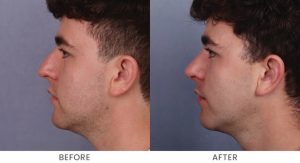

The term “dorsal preservation rhinoplasty” refers to the practice of protecting the dorsal area of the nose, or the bridge. This procedure selectively removes small amounts of bone and cartilage located under the nasal bridge. Through this method, experienced surgeons can reduce the height of the nasal dorsum, or nose bridge, while preserving the patient’s bridge contours. This is an innovative technique for patients looking to enhance their nasal contours subtly and naturally. Unlike traditional rhinoplasty, which often involves aggressive nasal bone removal and cartilage restructuring, dorsal preservation rhinoplasty aims to maintain the integrity of the nasal structure while achieving the desired enhancements.
One of the primary reasons why dorsal preservation rhinoplasty has gained immense popularity is its ability to deliver a more natural aesthetic result. Patients are usually highly satisfied, reducing the likelihood of seeking a revision.
The preservation of the dorsal structure also ensures that the nose retains its strength and support. This is a crucial factor in maintaining healthy nasal function. Patients achieve a refined, harmonious nasal appearance without sacrificing their nasal strength and functionality of breathing.
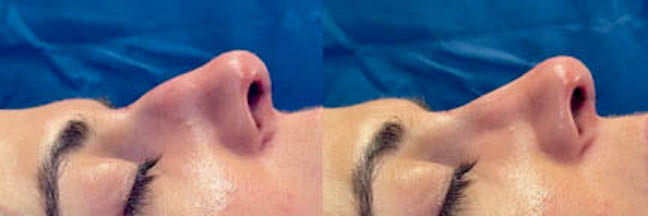
Compared to traditional rhinoplasty, dorsal preservation rhinoplasty offers a relatively quick and less invasive recovery process. With smaller incisions and less bone manipulation, patients experience reduced swelling, bruising, and discomfort. Most individuals can return to their daily activities within a week, making this procedure ideal for those with busy lives and schedules.
To embark on the journey of dorsal preservation rhinoplasty, it’s essential to choose a skilled and experienced facial plastic surgeon. With more than two decades of experience, Dr. Madorsky is dedicated to providing optimal outcomes for his patients while attentively addressing their unique needs.
If you’re considering a rhinoplasty, dorsal preservation may be the perfect solution for you. Schedule a consultation with Dr. Madorsky to get a professional opinion and explore your options.
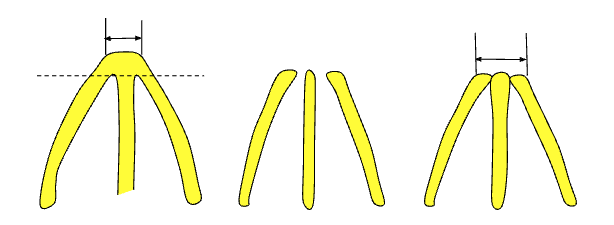
With traditional rhinoplasty, some patients have to accept a straight but widened bridge or dorsum. In cases of more dramatic dorsal reduction, an inverted V deformity can arise, giving the appearance of an “operated on” nose.
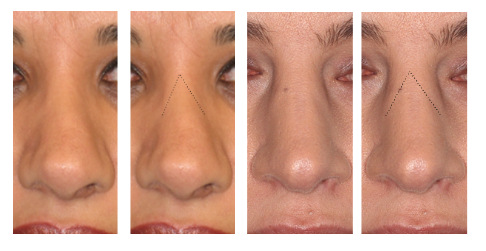
Dorsal preservation rhinoplasty bypasses those complications by removing the excess cartilage and bone under the nasal dorsum. The nasal dorsum is then pushed down to a lower profile, achieving a more natural appearance.
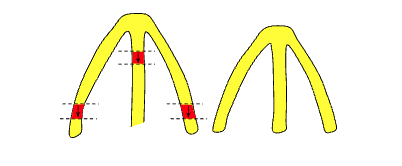 There are other advanced rhinoplasty techniques that minimize the widening of the nasal bridge. An experienced facial plastic surgeon can determine which technique is best for each patient to achieve optimal results.
There are other advanced rhinoplasty techniques that minimize the widening of the nasal bridge. An experienced facial plastic surgeon can determine which technique is best for each patient to achieve optimal results.
 This patient recently had a dorsal preservation rhinoplasty performed by Dr. Madorsky.
This patient recently had a dorsal preservation rhinoplasty performed by Dr. Madorsky.
A Rhinoplasty, or nose job, is surgery performed to alter the way your nose functions and looks. According to the American Society of Plastic Surgeons, nearly 220,000 rhinoplasties are performed yearly, making this the most common facial plastic surgery procedure. Rhinoplasty can simultaneously help you improve breathing and achieve a more balanced appearance
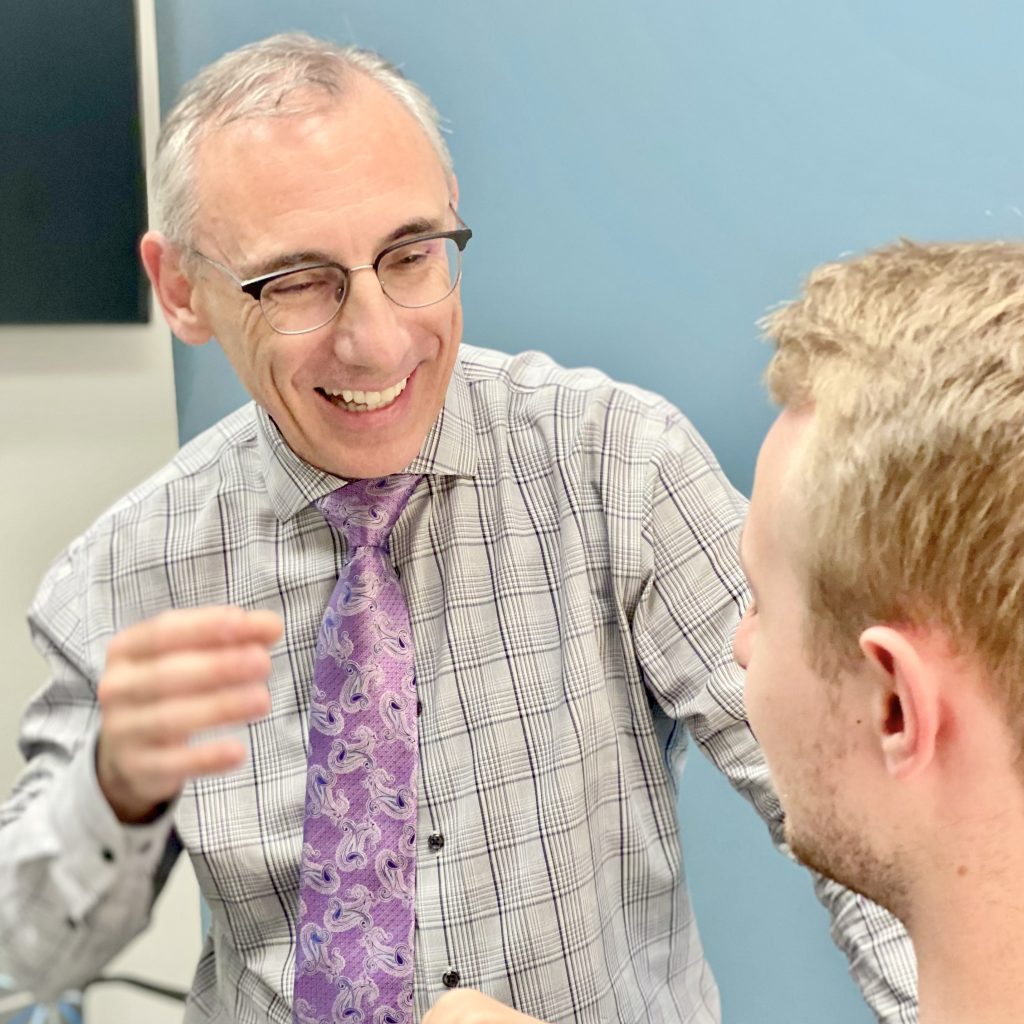
IS RHINOPLASTY RIGHT FOR ME?
A common medical reason for rhinoplasty is difficulty breathing through the nose. Nasal obstruction can cause problems with exercise, disturb sleep, contribute to snoring and sleep apnea, or interfere with other activities. If medical treatments (such as nasal spray or sleep apnea treatment) fail, surgery may be the next step. Rhinoplasty done for medical reasons such as these is often covered by health insurance.
WHAT ABOUT COSMETIC RHINOPLASTY?
Patients often ask, “While you’re in there, could you make other changes to my nose?” The answer is yes. The most common requests are reducing a nasal hump, refining the tip, or correcting asymmetries. These cosmetic changes, which are not covered by insurance, are frequently combined with functional rhinoplasty so there is only one recovery.
